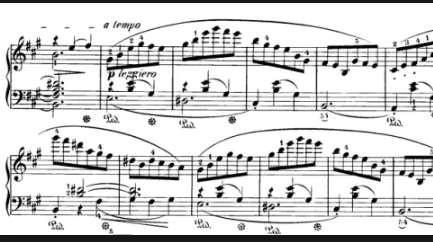

The developer is very receptive to the needs of VoiceOver users and has included many useful hotkeys for people using a bluetooth keyboard. Again, this is a fully featured program for creating and working with complex musical scores. Second, there is an inexpensive app for iOS called Symphony Pro. In fact, I worked with the developer to enable MuseScore to work with JAWS. They have given a lot of thought to accessibility. The program is very accessible both with NVDA and JAWS in Windows and I believe that their Mac version is accessible using VoiceOver. If you are a hobbiest, chances are this will meet your needs. There are several solutions for reading and creating musical scores that are accessible and either fre or inexpensive.įirst, MuseScore is completely free and offers many of the functions and capabilities of Sebelius. But this is definitely a viable option, and it's free, so that's one more point in its favor. The downside, of course, is that the UI is far less intuitive and easy to use than something like Sybelius or Lime since you can't interact with the score itself as you write it. Lilypond seems to do a much better job of automatically formatting the score. This is as opposed to a program like Lime which often requires a lot of specific parameters for bar spacing and so forth otherwise music winds up overlapping and similar issues. I never have to do anything with the formatting to make it turn out right-if there are any weird issues it's because I messed up. The positive of Lilypond is that, since it's all input as text, it's completely accessible, and in my experience the program handles score engraving very well. Unlike most music notation programs which work with a graphic UI, Lilypond takes text input with specific syntax-it's basically a scripting language-and compiles as very attractive scores. Rudolph is the co-author of the "Alfred Music Tech Series" that includes: Playing Keyboard, Music Production and MIDI Sequencing, and Composing with Notation Software.One completely different option is Lilypond. He was one of 4 co-authors of the TI:ME publication: "Technology Strategies for Music Education". His books include: "The Musical iPad", "The iPad in The Music Studio", "Finale An Easy Guide to Music Notation (Third Edition)", "Sibelius: A Comprehensive Guide to Sibelius Music Notation Software (Second Edition)", "Teaching Music With Technology (Second Edition)", "Recording in the Digital World", "YouTube in Music Education" and "Finding Funds for Music Technology". He has authored multiple online courses in music technology and music history. Tom Rudolph is an adjunct instructor for Berklee College of Music Online School, The University of the Arts, Central Connecticut State University, VanderCook MECA, and the Rutgers Mason Gross School of Music.


 0 kommentar(er)
0 kommentar(er)
